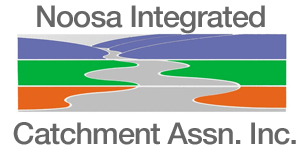This is a great citizen science program organised by Mary River Catchment Coordinating Committee (MRCCC) each year.
Frogs are easy to find during the warm months, especially when there’s rain about. The Mary River catchment and surrounds supports over 40 frog species. About ¼ are vulnerable, endangered or have disappeared in recent decades, mostly due to loss of habitat extent and quality as a result of swamp draining, vegetation clearing and weed invasion. There are other pressures also from feral animal predation and disease such as the Chytrid fungus that affects the skin function. Changes to our climate are adding further pressure, particularly prolonged dry periods that can drastically reduce the breeding window for frogs and increase the possibility of devastating wildfires.

Frogs rely on both aquatic and terrestrial habitats to complete their lifecycle, and their sensitivity to substances passing through their permeable skin makes them key indicators of changes in the surrounding environment. Changes in distribution and population dynamics may be a result of obvious conditions such as droughts but can also reflect less detectable changes such as declining invertebrate populations or increased predator presence (e.g. cats eat around 44 frogs each per year (CSIRO, 2020).
The Find a Frog in February citizen science program invites the community to contribute to our collective knowledge of frogs and their local requirements.
Collecting information on the location of frogs, the habitats they use and their abundance over time helps us to determine ‘normal’ trends and to monitor for and understand changes. The information also helps us to manage wetlands and waterways in particular, but also all components of our environment.
People of the Sunshine Coast, Noosa, Gympie and Fraser Coast council areas are encouraged to get out and about to find frogs and submit their observations during February. Over the past six years FFF frog finders have contributed to our knowledge of 33 species from 1370 locations (over 18,000 records!). Every record counts – even common species like the Green treefrog can be affected by changing environmental conditions too.
Find a Frog in February is proudly supported by the Sunshine Coast Council, Noosa Shire Council, Gympie Regional Council and the Fraser Coast Council, and delivered by the Mary River Catchment Coordinating Committee.
Contact for more information: findafrog@mrccc.org.au or phone (07) 5482 4766


